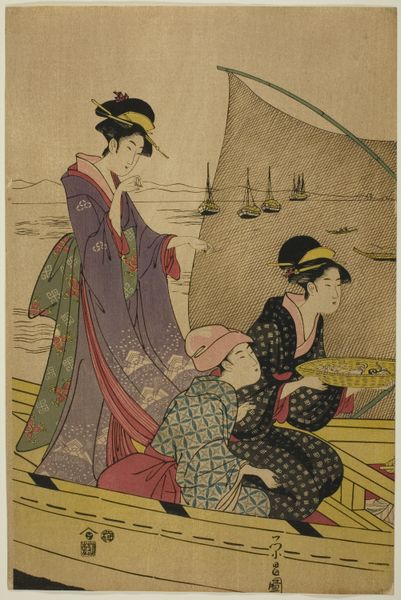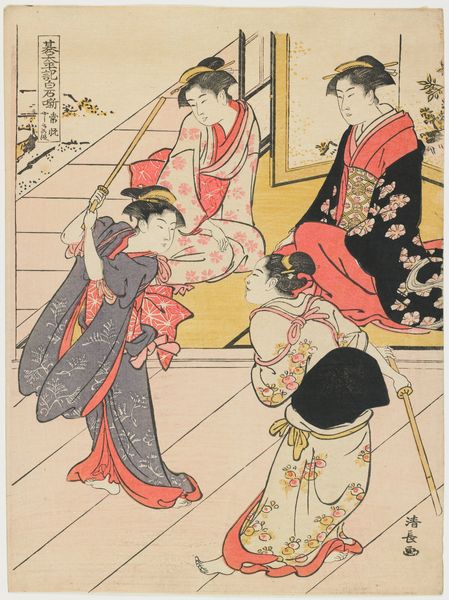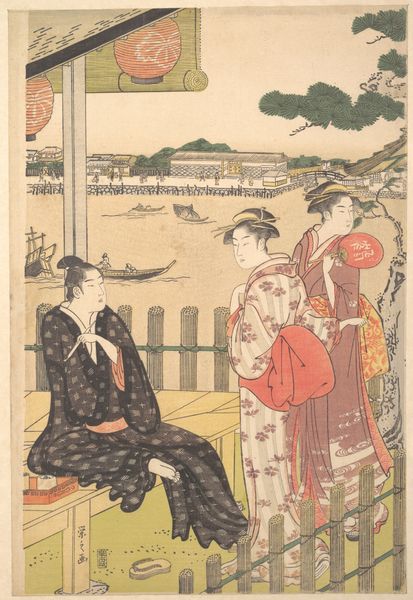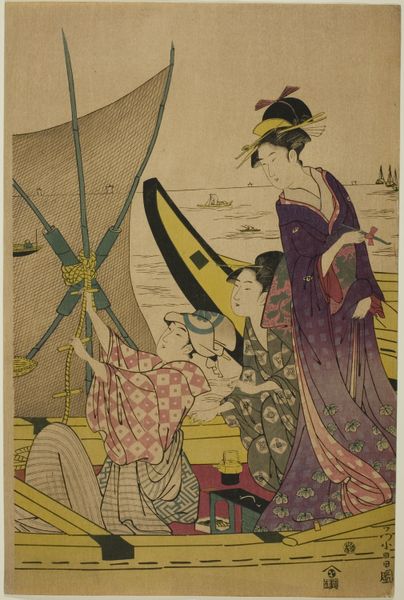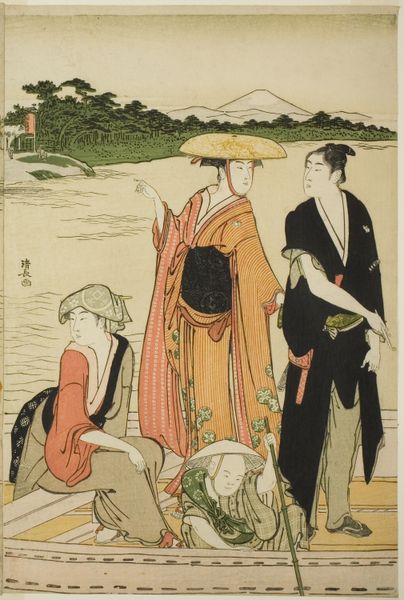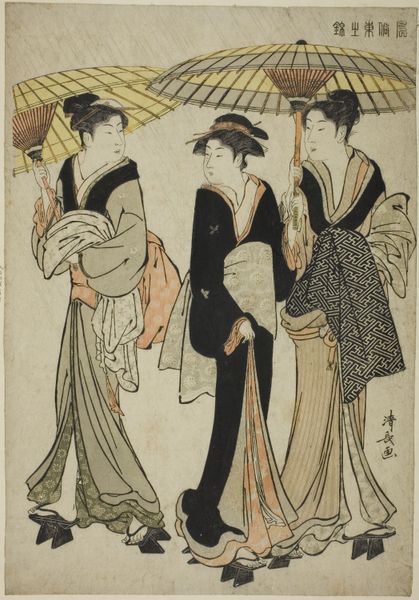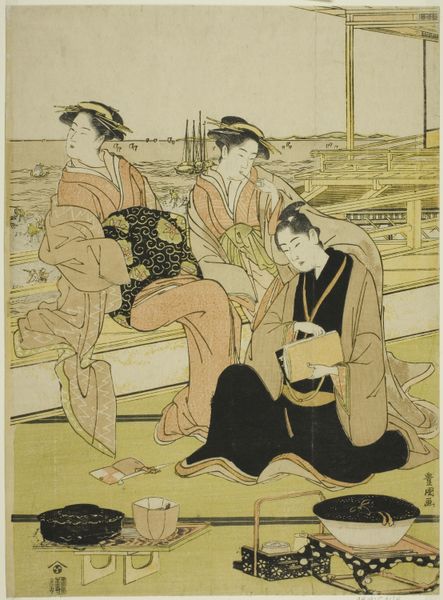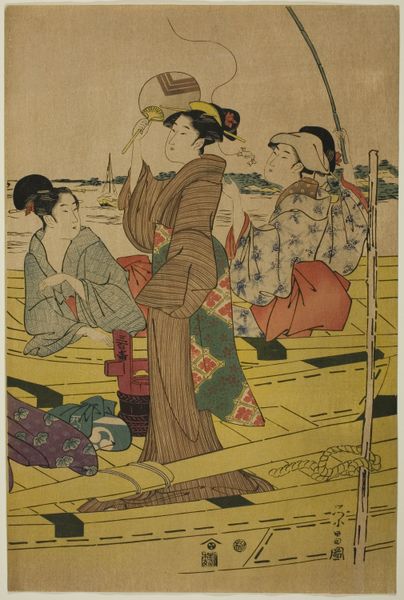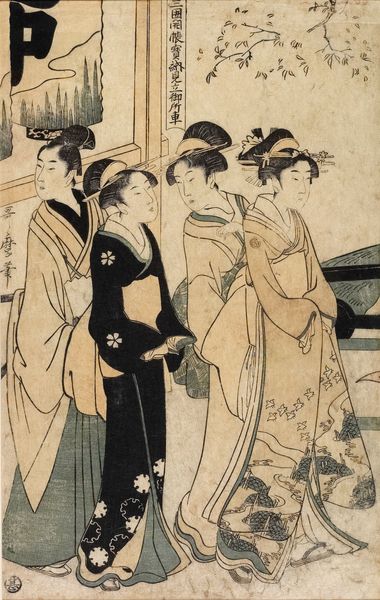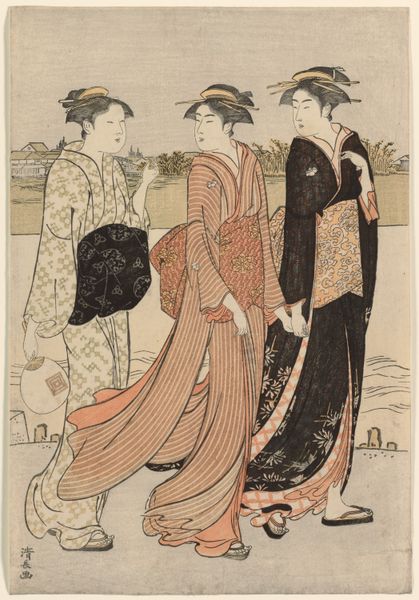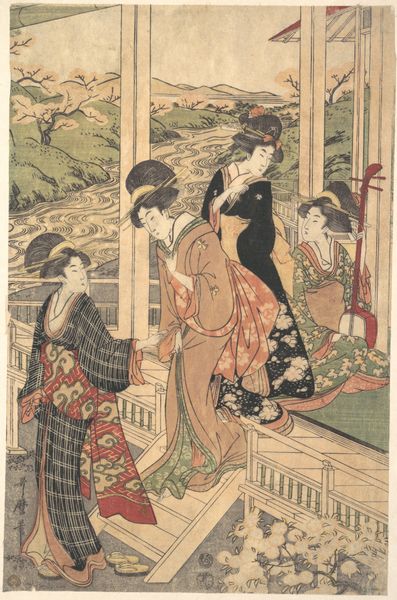
The Fourth Month, from the series "Twelve Months in the South (Minami juni ko)" c. 1784
0:00
0:00
print, woodblock-print
# print
#
asian-art
#
landscape
#
ukiyo-e
#
figuration
#
woodblock-print
#
genre-painting
Dimensions: 37.8 × 25.6 cm
Copyright: Public Domain
Editor: Here we have "The Fourth Month, from the series 'Twelve Months in the South'" by Torii Kiyonaga, a woodblock print from around 1784. It's such a serene scene. What strikes me is the contrast between the active harbor scene visible through the window and the intimate, domestic scene inside. How do you interpret this juxtaposition? Curator: It’s a potent contrast, isn’t it? Kiyonaga’s *ukiyo-e* prints, while often celebrated for their aesthetic beauty, were deeply embedded in the social and political realities of Edo-period Japan. The presence of the courtesans, or *oiran*, signifies their role in society: both as entertainers and as signifiers of status. Consider how their activities and leisure exist within a strictly delineated space compared to the bustling world just outside, with its own politics and opportunities open mostly to men. What does the division between public and private spheres suggest about the lived realities of women in that era? Editor: It speaks to a constrained existence, almost a performance of femininity for an implied audience. The figures seem almost self-aware. Curator: Exactly. And if we consider the economic power these women held, alongside their social confinement, it allows us to start unpacking some fascinating contradictions. Kiyonaga isn't just showing us a pretty picture; he’s subtly commenting on the complex dynamics of gender, class, and social expectation. How can art, even when seemingly focused on beauty, illuminate those hidden structures of power? Editor: I hadn't thought about it that way. I was mainly focused on the aesthetic beauty, but understanding the historical context really brings the image to life, exposing these tensions beneath the surface. Curator: Precisely. And remembering to investigate those tensions is what helps us critically engage with art’s historical function as a barometer of shifting social landscapes. Editor: This has totally reshaped how I see *ukiyo-e* prints. Thank you. Curator: My pleasure. Keep questioning; keep digging.
Comments
No comments
Be the first to comment and join the conversation on the ultimate creative platform.
